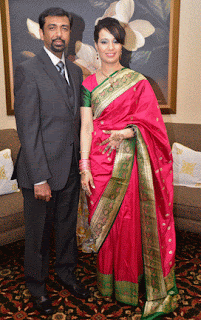Here are more fashions from the Pakistani wedding, featured in Post 7- Pakistani wedding-clothing.html.
Henna
The bride’s hands were painted with henna for the wedding ceremony.
According to Wikipedia, the free encyclopedia online:
The name henna also refers to the dye prepared from the plant and the art of temporary tattooing based on those dyes. Henna has been used since antiquity to dye skin, hair, and fingernails, as well as fabrics including silk, wool, and leather. The name is used in other skin and hair dyes, such as black henna and neutral henna, neither of which are derived from the henna plant.[3][4]
Historically, henna was used for cosmetic purposes in the Roman Empire, Convivencia-period Iberia and Ancient Egypt, as well as other parts of North Africa, the Horn of Africa, the Arabian Peninsula, the Near East and South Asia. It was also popular among women in 19th century Europe. Today, bridal henna nights remain an important tradition in many of these areas.
Source: http://en.wikipedia.org/wiki/Henna
The book I bought to experiment with henna is The Art of Henna, by Pamela Nichols. It gives step-by-step instructions on how to apply the dye, which, within a reasonable time disappears.
The Bride's Wedding Dresses
To see the belly dancer's costume please visit my business Facebook page where I've posted the video I took of her dancing at the reception. Please excuse that the video is sideways. It enabled a closer view.
This has been a fun post to put up.
But I have to go now,
But I have to go now,
Laurel
www.Laurelhoffmann.com- published books
www.ContemporaryFashionEducation.com- school
Facebook: Contemporary Fashion Education, Inc.
Twitter
Facebook: Contemporary Fashion Education, Inc.
P:215 884 7065, F:215 884 3727, C:610 908 7222






























































